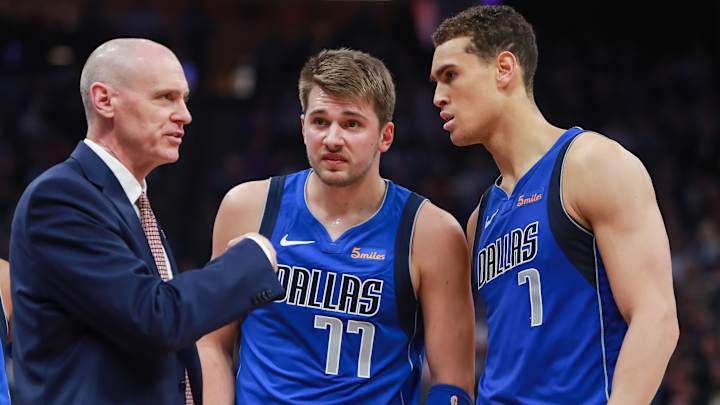How Can Mavs Maximize Dwight Powell?

It’s no secret that the Dallas Mavs’ big-man rotation is an area of the roster that needs an upgrade. However, with the trade deadline in the past, the Mavs must (barring any unlikely buyout adds) deal with what they have.
And maybe fix one aspect of what they have.
One player who we believe can be a difference-maker, if used right, is Dwight Powell. While far from the most popular player among the fanbase - he is a popular person but not a popular player - Powell does have strengths that can be helpful for winning in spurts.
Offensively, Powell is a mild finisher at the rim, near league average in terms of efficiency, but doesn’t take the same shots he once was taking in his best days as a Maverick. This is, of course, largely is in part due to the Achilles injury Powell sutained in January 2020; that robbed him of some of his springiness.
Additionally, this year's Mavs' structure has meant a lack of pick-and-roll opportunities for Powell.
There are ways to counter this, however, and it all stems from one idea: using Powell 1) in limited bursts and 2) only against small lineups.
The NBA continues to push SmallBall lineups, alignments in which no "traditional center'' is on the floor. A role here could be Powell’s calling card, drawing up more ideal matchups for Powell to get his pick-and-roll looks off with ease, as well as utilizing his team-best offensive rebounding.
That's right: In a stat that is hard to believe as it conflicts with "The Eye Test'' (maybe factoring in that "fan favorite'' thing), Powell’s 8.4 offensive rebounding percentage - equal to Karl-Anthony Towns' - would rank 26th in the NBA if he had the minutes to qualify.
What does that tell you? The ability is there, but he needs to be going against players closer to his size, rather than trying to maneuver and leap against 7-footers.
This subtle change, we believe, could allow for a much more productive 15 minutes per game from Powell.
This plan does have limitations due to not every team running small-ball lineups consistently. ... but why expose Powell to situations that do not put him in position to succeed?
Defensively, Powell can offer value as part of a team-defense approach. While the Mavs should not push for him to be anything remotely similar to a rim protector, there is value for Powell on the defensive end.
READ MORE: The State of the Mavs - Step Back Podcast
Since February, the Mavs have experimented with a way to beat some post-minded big men, such as Jonas Valanciunas. The best way to utilize Powell against bigger players who live near the rim is to use Powell as a trapper, thus forcing the opposing big men to become a passer out of double teams. Additionally, making Powell a "free safety'' near the big man in the passing lanes has worked wonders over the years.
Powell has an innate ability to use his hustle and his long arms and his quick hands to his advantage, and the Mavs need to shift away from having him isolated one-on-one, where many of his problems stem from.
Dwight Powell has always been sneaky good in the passing lanes. A couple examples this year and my all time favorite steal of his way back in the day #MFFL pic.twitter.com/4y2rpxslpY
— Rich Stayman (@MavsDraft) March 30, 2021
If the Mavs can find maximized value out of Powell, it does wonders for the Mavs in the upcoming offseason, opening a door to a potential salary dump that teams would be more willing to take on. Or, because he is an organizational fave, another way to look at it:
It does wonders for the on-court chances of Dwight Powell winning matchups and helping the Luka Doncic-led Mavs to win games.
READ MORE: Mavs Donuts: The 1-2 Punch Dallas Needs
